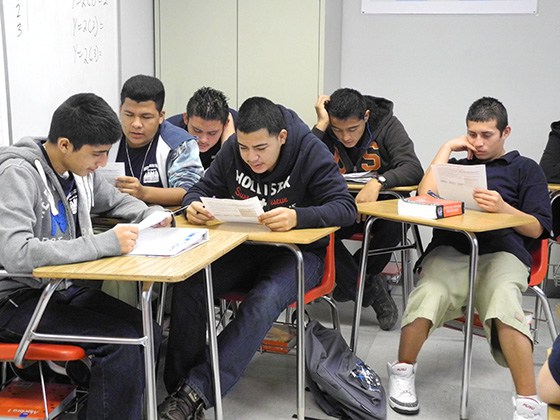What Parents and Advocates Should Know About California’s ESSA Plan
UnidosUS has released a new brief on California’s Every Student Succeeds Act (ESSA) plan, with a spotlight on English Learners. The timing of the report couldn’t be more appropriate, as the U.S. Secretary of Education Betsy DeVos recently approved the third draft of the state’s plan, less than a day after the California Board of Education submitted it. Approval means the state now qualifies for up to $2.4 billion in federal aid for low-income schools.

While California sets some ambitious goals, previous iterations of its ESSA plan fell short because they used the state’s complex color-coded ratings system—the California State Dashboard—which focuses on schools and districts but does little to pinpoint the students and schools that are struggling most. Federal guidelines require states to designate the lowest-performing 5% of schools, so they can get extra support, but California has so far seemed more interested in masking poorly performing schools and letting them off the hook than helping the low-income, minority students they serve. After months of foot-dragging, the state has finally agreed to comply with the law, which takes effect this fall.
Prior versions of California’s plan also failed to adequately track individual student and subgroup progress and show how their performance might be improved. (The state is still ambiguous on the latter point and plans to seek input from the public.)

California also plans to seek a waiver that would let it use its own definition of English learners, which breaks out English-language learners who have been reclassified as proficient in English. Federal law, however, requires that the annual progress of all English learners be considered.
The new brief looks at student graduation rates and achievement gaps in the state and scrutinizes elements of California’s plan—including its testing and accountability policies, and short- and long-term goals for improving educational outcomes as they relate to English Learners.
The report also lists questions that advocates and parents of English learners can ask to determine whether those students are getting the instruction they need and deserve.
Here are a couple of highlights:
California has 1.3 million English learners (the vast majority of whom speak Spanish), yet their high school graduation rate—73%—trails that of their never-English-learner peers (84%) in the state.
More troubling, though, are the double-digit achievement gaps between those English learners, who constitute about a fifth of the students enrolled in California public schools, and their English-only peers in English language arts and math content areas.

While California and its policies are generally considered to be forward-thinking, its public schools not only rank well below the national average, according to the nation’s report card, but the state’s accountability system seems to favor multiple nonacademic measures like rates of chronic absenteeism and suspension over academic results and test scores. (Yet, according to an article by the LA School Report, standards are, apparently, so bad at some Los Angeles schools that some low-income families are suing the state for failing to provide their kids—who are mostly Latino or Black—with equal access to learn to read.)
Given all that, it’s hardly surprising that many civil-rights groups remain anxious about how the state will track and factor the performance of subgroups into school ratings and whether underserved students and schools will get the help and resources they need going forward.
Click here to read the full report.


